Girls chant “We want Paul!”—but it’s not McCartney they’re swooning over. This is the summer of 1961, and the Beatles are still more than a year away from recording Love Me Do. Instead, the heart throb du jour is a 19-year-old kid from Canada named Paul Anka. At the Atlantic City boardwalk, the ladies line up to get autographs; some of them also give, or receive, a kiss. The camera follows the young star backstage and into the dressing room. The concert is about to start, so Anka dresses hurriedly. We see him in his underwear. Later, he speaks candidly of being “a heavy kid” in school and of his determination to become what entertainers were expected to be. He lost 35 pounds.
“You’ve got to have appeal,” he says, looking almost directly into the camera. “You’ve got to look like you’re in show business—if you don’t, you’re not going to make it.”
This intimate documentary, named for one of Anka’s biggest hits, is called Lonely Boy, and it was produced and co-directed by a Canadian filmmaker who ought to be much better known: Roman Kroitor.
Kroitor, who died in 2012, was known for a string of innovations in movie-making. He was at the forefront of the cinéma vérité movement, typified by films like Lonely Boy as well as a pair of short documentaries on the legendary piano player Glenn Gould, and another that brings viewers into the life of Igor Stravinsky. Later, Kroitor pioneered multi-screen filmmaking and co-founded IMAX, the company that would deliver a giant-sized cinematic experience to viewers around the world. And along the way, he made a film that inspired Stanley Kubrick as he was making 2001: A Space Odyssey—plus Kroitor just happened to give George Lucas the idea for “the Force.”
But above all else, Roman Kroitor was a risk-taker who intuitively understood the elements of visual storytelling, recalls filmmaker Stephen Low, who often collaborated with Kroitor (as did his father, Colin Low). While Kroitor made dramas as well as documentaries, there was something about the latter format that fascinated him. As Low puts it, he “loved telling real stories that celebrated real people.”
And though the story of this filmmaker has faded a bit over time, Kroitor made a very real impact on dozens of filmmakers, and on the craft itself. Today, he may be one of film history’s most overlooked yet influential figures.
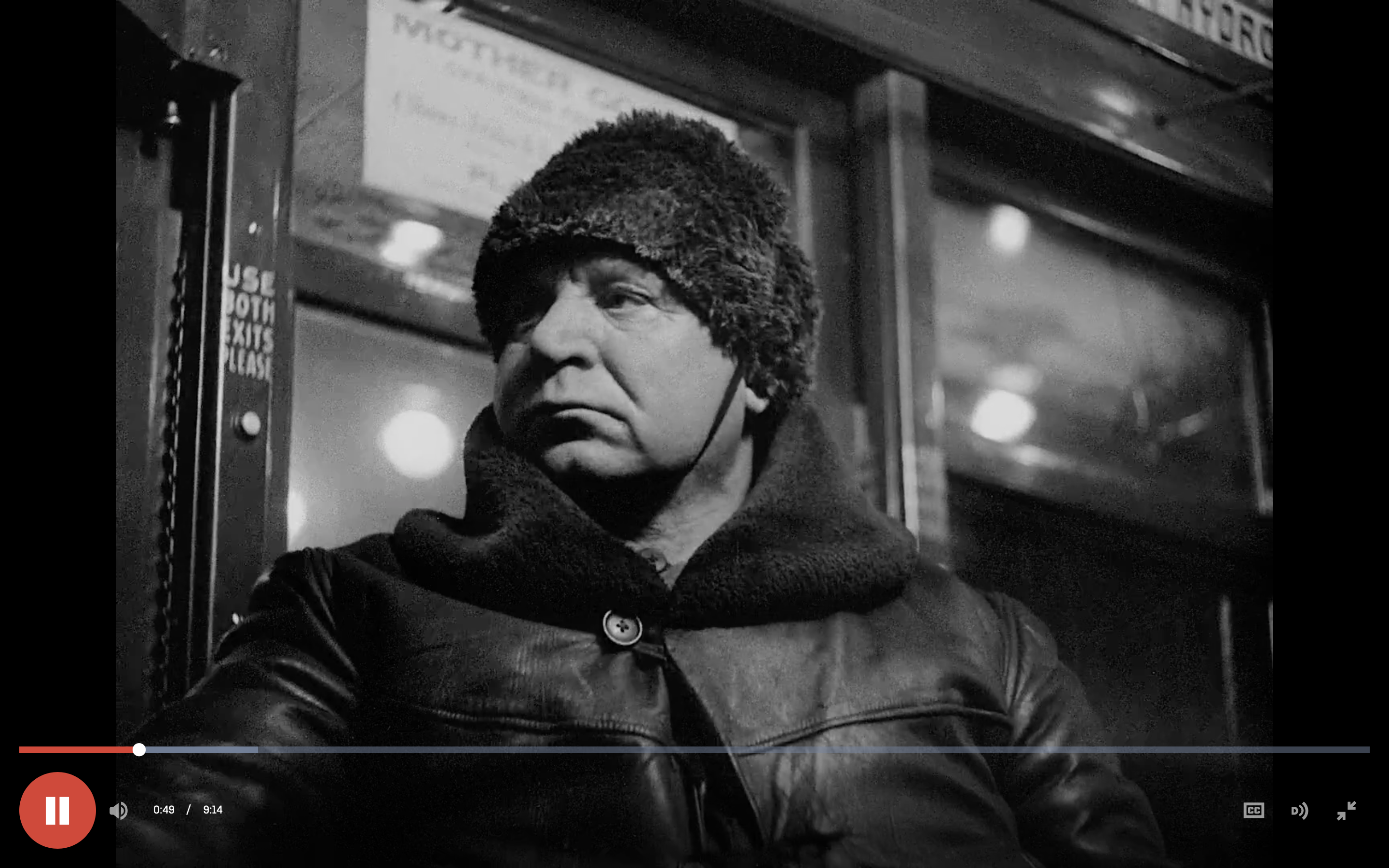 Paul Tomkowicz: Street-railway Switchman.NFB
Paul Tomkowicz: Street-railway Switchman.NFB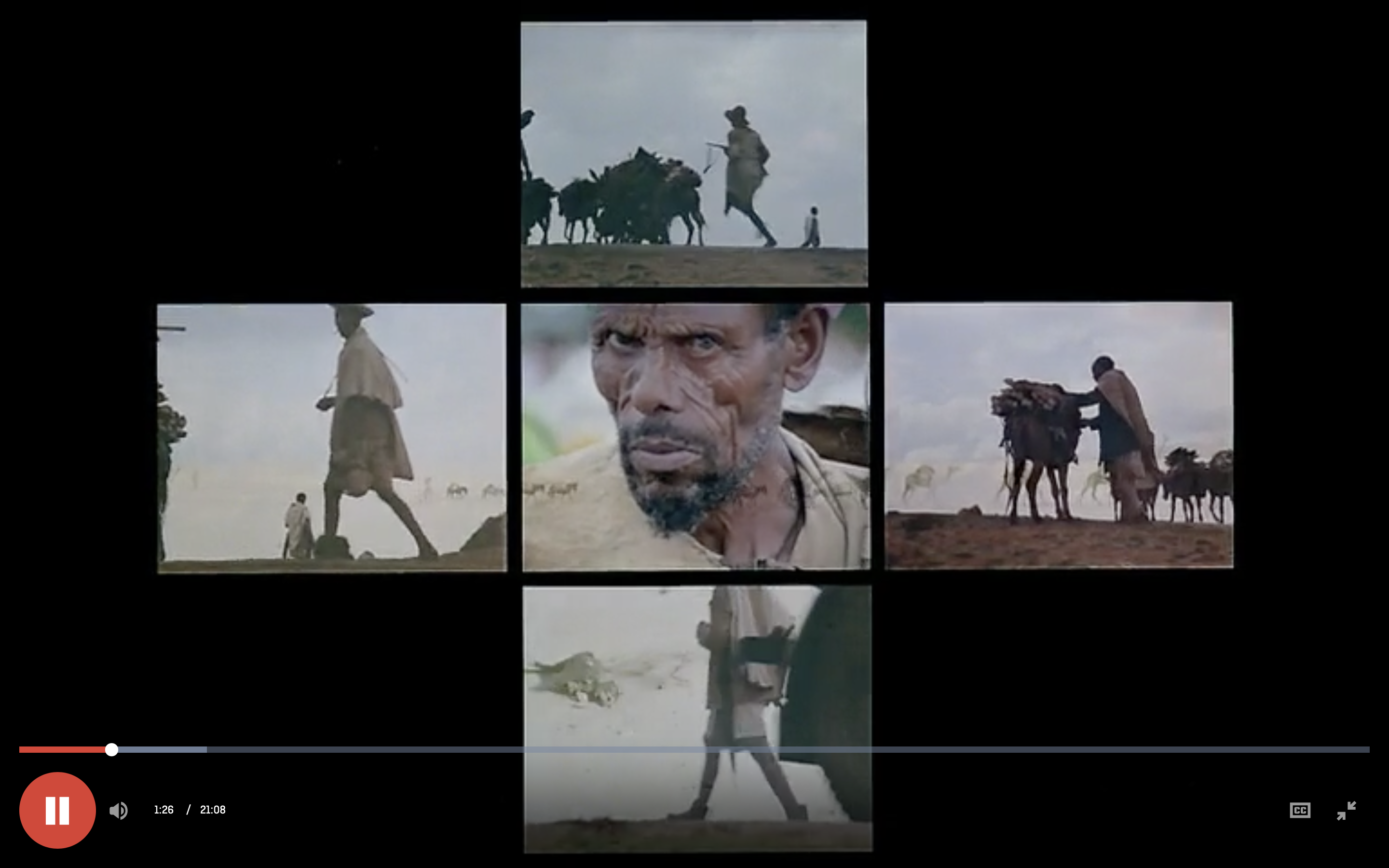 Kroitor's In the Labyrinth, which was originally a multi-screen presentation.NFB
Kroitor's In the Labyrinth, which was originally a multi-screen presentation.NFB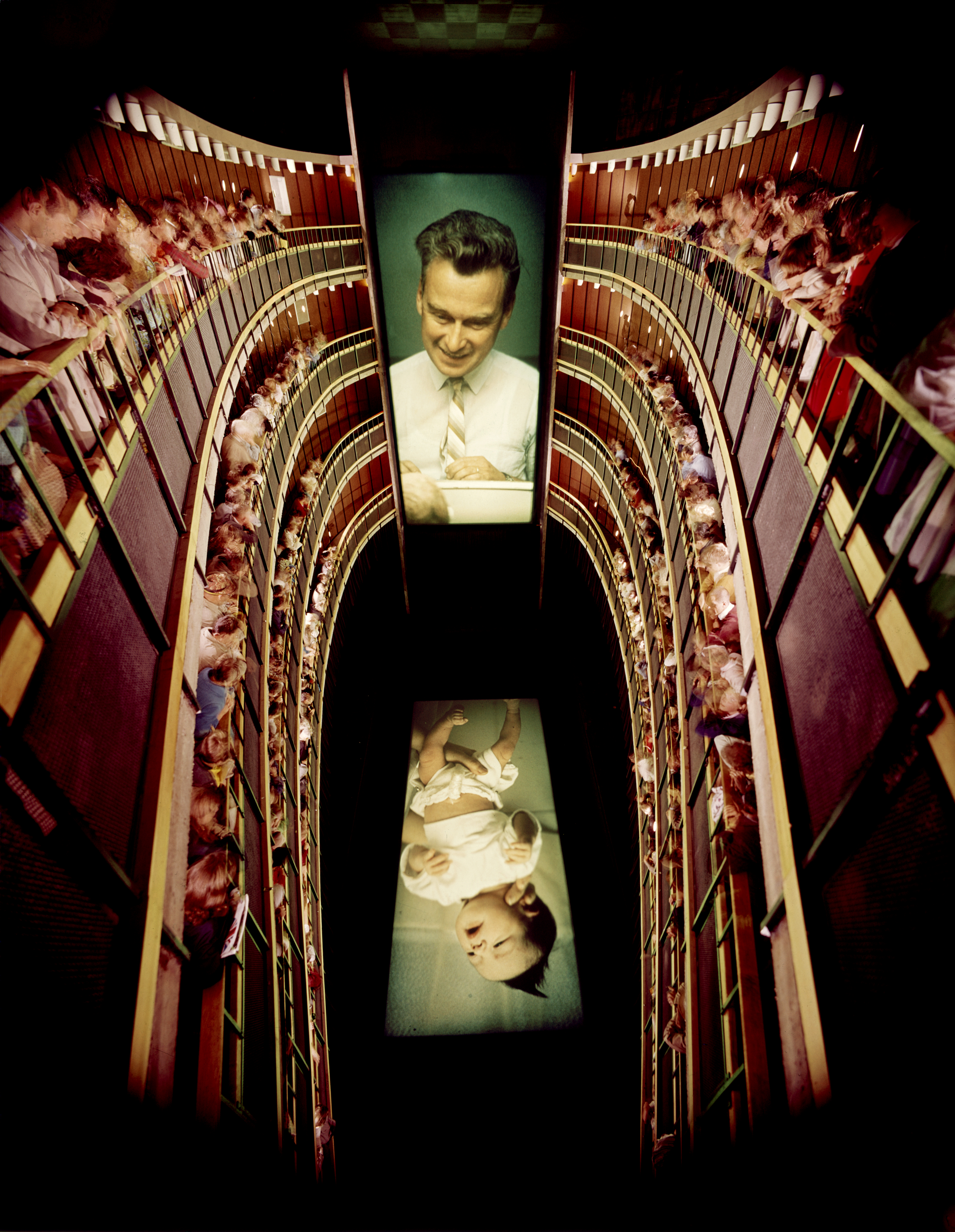 Labyrinth at Expo '67: This view shows the first space (and the film's first scene), which features a pair of 50-foot screens, one vertical and the other on the floor, to be viewed from one of four oval-shaped balconies.
Labyrinth at Expo '67: This view shows the first space (and the film's first scene), which features a pair of 50-foot screens, one vertical and the other on the floor, to be viewed from one of four oval-shaped balconies.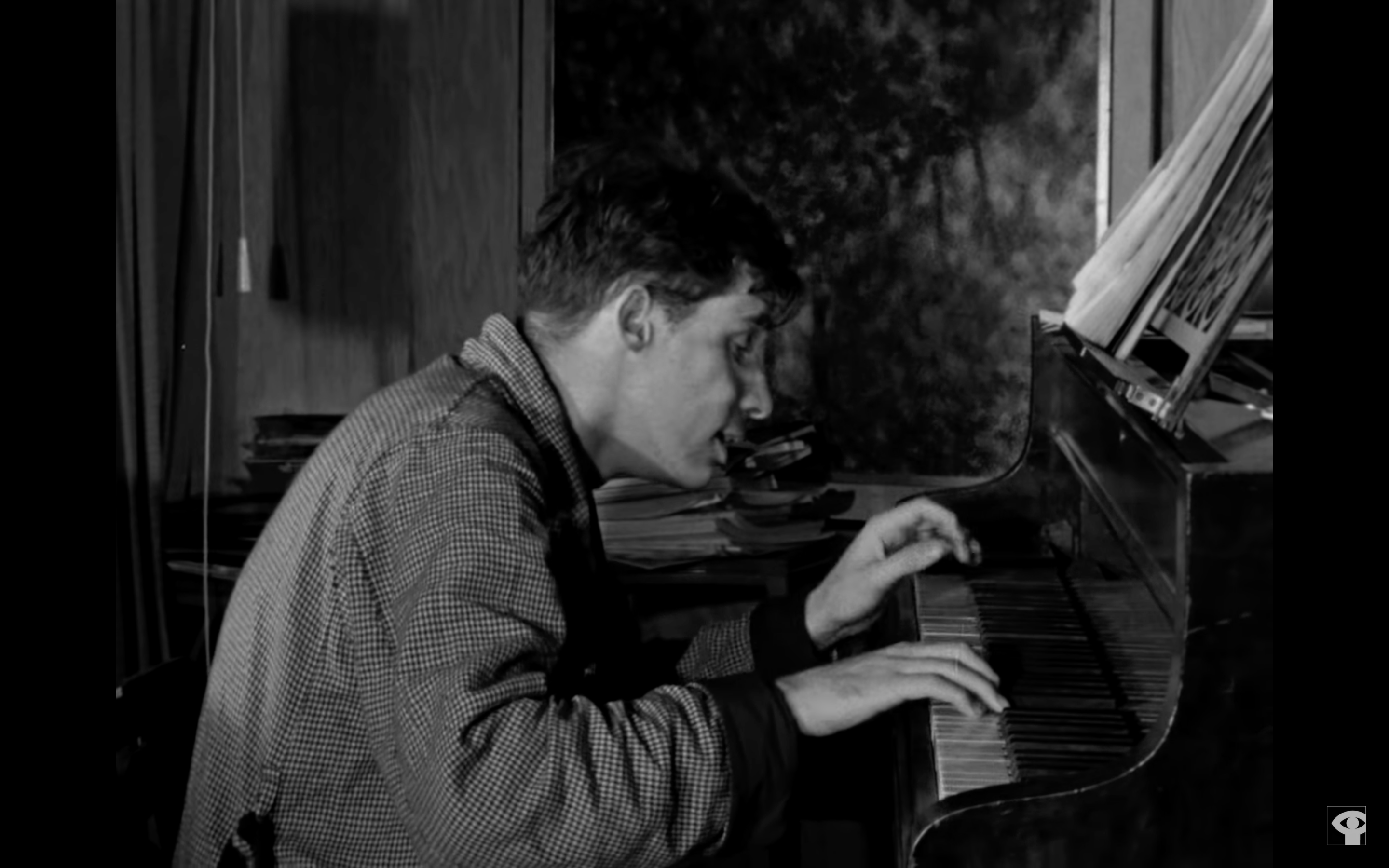 Kroitor documented pianist Glenn Gould twice.NFB on YouTube
Kroitor documented pianist Glenn Gould twice.NFB on YouTube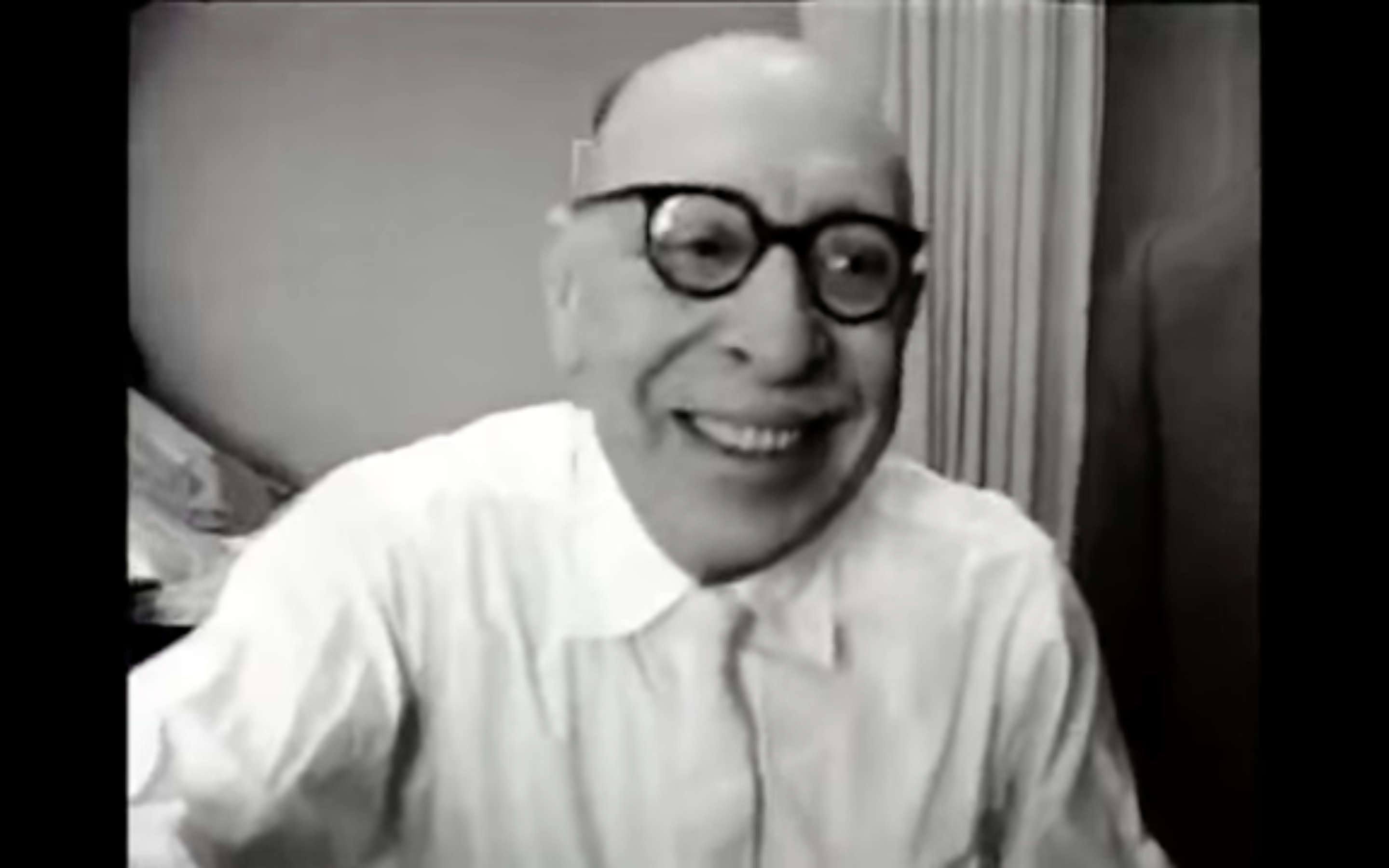 Stravinsky, up close and personal.NFB on YouTube
Stravinsky, up close and personal.NFB on YouTube
Too “diligent”
Born in 1926 in Saskatchewan, Kroitor went to school in Winnipeg and later earned a master’s degree in philosophy and psychology from the University of Manitoba. There were no film schools in Canada at the time, so he learned on the job, beginning with a summer internship at the National Film Board in 1949. He directed his first film, Rescue Party, in 1952. Then, in the late 1950s and early '60s, something radical happened in the world of film. Suddenly, documentaries became more intimate, more real. The movement is often called by its French name, cinéma vérité. And Kroitor, along with a handful of colleagues working at the NFB, were at the forefront of this new wave of movie-making.
Many of those innovative filmmakers have passed on by this point, but Munro Ferguson, who witnessed it all as a youngster, is very conscious of just how revolutionary their work was. Ferguson has served as animation director for dozens of films, and his father, Graeme Ferguson, co-founded IMAX with Kroitor. (Ferguson is also Kroitor’s nephew; Graeme’s sister, Janet, is Kroitor’s widow.) This new, more intimate form of storytelling was made possible by three new pieces of technology, all of which appeared on the scene just about simultaneously, Ferguson tells Ars. The first development was 16mm motion picture film, which allowed for cameras that were small enough to be easily hand-held. The second was good-quality, portable sound-recording equipment, like the Nagra reel-to-reel tape recorder. The third was the zoom lens, allowing the filmmaker to switch from wide views to close-ups without changing lenses.
“You went from a film crew of seven or eight people down to two people—a camera operator and a sound man,” recalls Ferguson. “So you could be much more spontaneous in your filmmaking, and really try to capture reality as it is.”
Up to this point, most documentaries were scripted, explains Albert Ohayon, a curator at the NFB. Scenes were rehearsed; everything was planned in advance. With the dawn of cinéma vérité, “all of a sudden we have this portable filming equipment, and we’re able to go on location, and just film things as they happen,” he says. “I think the filmmakers of the era, including Roman Kroitor, who had started in this very stifling era in which everything had to be prepared in advance, all of a sudden felt this liberation.”
One of Kroitor’s early short documentaries, Paul Tomkowicz: Street-railway Switchman (1953), is as intimate as it sounds. The camera follows a 64-year-old Polish immigrant as he maintains the streetcar tracks on a blustery winter night in Winnipeg, sweeping away the snow and salting the tracks. Tomkowicz never looks at the camera, though at times it must have been no more than an arm’s length away. He tells his story in voiceover. “I know the tracks like my own garden,” he says. In the final scene, the daylight has returned. His shift over, he settles into a diner for coffee and a breakfast, which, thanks to the razor-sharp images, we can see consists of five hard-boiled eggs, three sausages, and six slices of bread.
The intimacy seen in Lonely Boy and in the Tomkowicz film turns up again in the pair of films Kroitor made about Gould, called Glenn Gould: Off the Record and Glenn Gould: On the Record (both from 1959). It’s also there in the Stravinsky film, simply titled Stravinsky (1965). In the first of the Glenn Gould films, we see Gould hammering intently on the grand piano in his home, by the shores of Lake Simcoe, north of Toronto—but we also see him walking his collie, Banquo, along a country lane. At one point, Gould, seated in his garden by the edge of the lake, answers questions posed by Kroitor—but we also see him in conversation with fellow musician and radio producer Franz Kraemer. Their banter is entirely unplanned, which, after an era of scripted documentaries, surely felt revolutionary. (What would happen, Gould muses, if a child were raised not with Mary Had a Little Lamb but with Schoenberg? Would the kid develop an affinity for the twelve-tone scale?)
“It feels spontaneous—you don’t know what’s going to happen next,” says Ferguson. “There’s a kind of excitement from the fact that you know it was shot ‘live.’ This isn’t planned at all; anything could happen.”
In the second film, we see Gould recording in a studio in Manhattan; the camera is sometimes on Gould and sometimes on the bevy of engineers in the adjacent control room. “I love the sequence where Gould is playing, and they’re recording,” says Ohayon, “but the camera isn’t on Gould; the camera is on the engineers, who are yakking amongst each other, talking about their weekend—until they realize the camera is on them, and they start talking about the recording session again.”
The Stravinsky film is similarly full of revealing happenings—like the scene where the composer is settling into his hotel room in Hamburg, Germany, and the novelist Vladimir Nabokov drops in for a visit. (One senses that Kroitor and his co-director Wolf Koenig knew that Nabokov was going to come by—or else they were very, very lucky to have the camera set up in the hotel room at that moment.) Interestingly, cinéma vérité does not require the filmmaker to disappear; rather, they often appear at the periphery of the story—and sometimes within the frame. At one point, Stravinsky suggests Kroitor and Koenig are being too something—he grabs a Russian-English dictionary that he always travels with—too “diligent,” he says. He invites the two filmmakers to relax and join them for a drink.
Where no documentary has gone before
As innovative as those films were, Kroitor’s 1960 documentary Universe, co-directed with Colin Low, was even more groundbreaking. The film, as the title suggests, takes viewers on a tour of the universe—or what was known of the universe at that time. It has often been compared to Carl Sagan’s Cosmos TV series, though Universe pre-dates Cosmos by two decades. Universe follows astronomer Donald MacRae over the course of a night observing at the David Dunlap Observatory, north of Toronto. It also features remarkably sophisticated animation of planets and moons, stars and galaxies.
Among those in awe of Universe was the late Stanley Kubrick. Kubrick screened the film while he was preparing to work on 2001, “and he absolutely loved it,” says Ohayon. “He contacted the NFB, and several of the people who had worked on the film, including Roman Kroitor, and asked them to come down and work with him on 2001.” Kroitor declined, though Kubrick hired Wally Gentleman, who worked on Universe’s optical effects, to help with 2001. He also hired Douglas Rain, who narrates Universe, to be the voice of the HAL 9000 computer.
Kroitor’s connection to George Lucas is more roundabout, but just as fascinating. While a student at the University of Southern California, Lucas screened a number of NFB films, including an experimental work called 21-87 (1964), by another Canadian filmmaker, Arthur Lipsett. The film is actually a montage of images and sounds, and it includes unused clips from other films—including an outtake from a film that Kroitor had made called The Human Machine. In this snippet, Kroitor is heard talking with neuroscientist and artificial intelligence pioneer Warren McCulloch. Apparently responding to McCullough’s assertion that human beings are merely complex machines, Kroitor says: “Many people feel that in the contemplation of nature, and in communication with other living things, they become aware of some kind of force, or something, behind this apparent mask which we see in front of us, and they call it God.”
Lucas was mesmerized. And thirteen years later, Darth Vader would use the Force to strangle his enemies while Luke would use it to obliterate the Death Star. (Oh, and “2187” shows up as Princess Leia’s cell number in the original Star Wars film, and again as Finn’s stormtrooper designation—FN-2187—in The Force Awakens.)
Bigger
In the Labyrinth, which Kroitor co-directed with Colin Low and Hugh O’Connor, was created specifically for a multi-screen theater at Montreal’s Expo 67. The film, a kind of snapshot of humanity on planet Earth, was shot all over the world: we see America’s Great Plains and African rainforests; we’re taken to Greece and India and Cambodia; we see a caravan of camels making their way across a desert. We catch glimpses of Winston Churchill’s funeral in London, young girls at a ballet lesson in Moscow, and Soviet cosmonauts training for a space launch—all in full color. The moving images on each of the five screens sometimes flow in unison; sometimes they offer independent vignettes. (Though viewable on the NFB’s website, seeing it on a computer or a TV surely doesn’t quite capture the oversized experience that visitors to Expo would have enjoyed.)
“Labyrinth was a real masterpiece,” says Stephen Low. “The film board trusted him to make this film about humanity; about life, about the stages of life. It’s a very artistically risky, complex, challenging thing—but he pulled it off.”
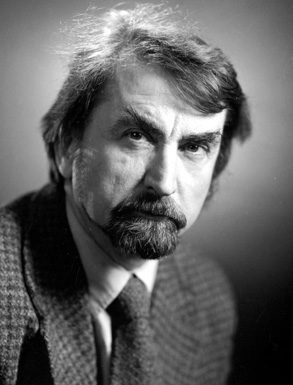
Making Labyrinth seems to have given Kroitor a taste for ever-larger visual presentation. “The problem with multi-screen like they were doing at Expo 67 is that you had to have different projectors that had to be perfectly synchronized,” says Ferguson. “It was really complicated to do things that way. So they thought, ‘Let’s just build one big projector.’ And that’s how IMAX emerged.”
The IMAX system employed special cameras and dedicated projectors. In both machines, the film is fed through sideways, with three standard 65mm frames making up a single IMAX frame. (The aspect ratio works out to 4:3, the same as television of that era—but with a heck of a lot more resolution.) Kroitor and Graeme Ferguson founded Multi-Screen Corporation, the company that would become known as IMAX, along with Robert Kerr, who owned a local printing company, and later brought on engineer Bill Shaw. Kroitor produced the first IMAX film, Tiger Child—a kind of sequel to Labyrinth—which premiered at Expo 70 in Osaka, Japan. Further oversized films followed, including Hail Columbia (1982), directed by Ferguson with Kroitor as writer and co-producer, which documented the first space shuttle mission; and Transitions (1986), the first 3D IMAX film.
Had he been so inclined, Kroitor could have settled in Hollywood and become part of the mainstream movie business—but such a move held no appeal. That wasn’t just because he liked being near his close-knit group of friends and colleagues in and around Montreal, where he spent most of his adult life, although that was surely a part of it. He simply found Hollywood, and the celebrity culture that swirled around it, to be “distasteful,” as Ferguson puts it. Plus, “He wanted to make films in Canada.”
The Canadian film scene at that time may have been a small pond, but it ultimately allowed Kroitor to be a very large fish. Kroitor’s association with the NFB lasted decades; in the 1960s and '70s, he supervised dramatic production there, and he later worked as an executive producer, seeing that the most deserving projects got the green light. The film board, for its part, appreciated Kroitor’s vision and energy.
“The NFB was unique in the world,” says Low. “It gave these young guys a chance to make these magical films.”
Sorry, Mick
Kroitor’s final directing project was the 1991 Rolling Stones concert film, At the Max—a project plagued by disagreements and infighting. Low says the members of the band couldn’t agree on a director, and the job eventually fell into Kroitor’s lap more or less by accident—even though he was not a Stones fan. “I don’t think he was very impressed by the Rolling Stones,” Low recalls. Kroitor was hoping the film would tell some sort of story; the band wanted a straight-up concert film. While Kroitor may have been unmoved, critics like Roger Ebert were blown away. “No other musical film in my experience has so overwhelmed the eyes and ears, drawing us into the feeling and texture of a rock concert,” the famous critic wrote in his review.
Low remembers Kroitor not just as a brilliant filmmaker and storyteller, but as someone who was constantly seeking the new, the untested. “He wasn’t interested in what had happened in the past,” says Low. “He wanted to experiment.” He might not have been the easiest person to get along with—he could sometimes be prickly, and he was certainly demanding. “But everyone benefited from Roman’s courage and his ingenuity. He took crazy risks, creatively and technically—and everyone benefited from that.”
For those curious, today there are really only two choices to catch up on Kroitor’s work—YouTube and the NFB’s web archive. But if you take the time to watch something like Universe now, nearly 60 years after its release, it remains easy to see why this lesser-known Canadian filmmaker captivated some of the biggest and most revered names in film.
Dan Falk (@danfalk) is a science journalist based in Toronto. His books include The Science of Shakespeare and In Search of Time.
"film" - Google News
April 03, 2021 at 07:00PM
https://ift.tt/2Pnqe3p
The forgotten director who gave us The Force, inspired 2001, and changed film - Ars Technica
"film" - Google News
https://ift.tt/2qM7hdT
https://ift.tt/3fb7bBl
Bagikan Berita Ini














0 Response to "The forgotten director who gave us The Force, inspired 2001, and changed film - Ars Technica"
Post a Comment